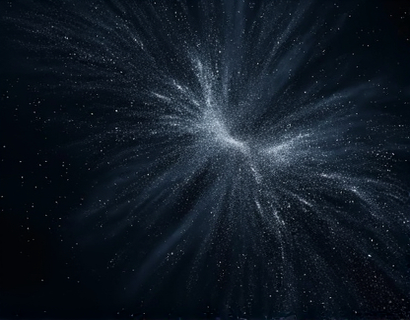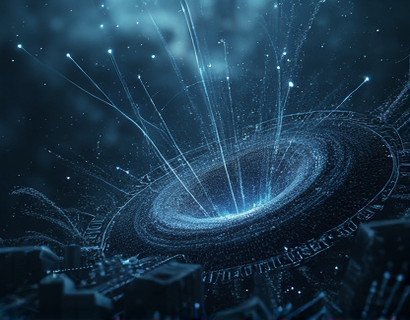Unlocking the Universe: In-Depth Insights for the Curious
The cosmos, an endless expanse of mystery and wonder, has captivated human imagination for centuries. From the earliest stargazers to modern astrophysicists, the quest to understand the universe drives curiosity and innovation. This comprehensive guide serves as an essential resource for those eager to deepen their understanding of the cosmos, offering a rich tapestry of insights across various astronomical topics. Whether you are a seasoned astronomer or a curious newcomer, this collection is designed to empower and inspire, fostering a passion for learning and discovery.
Exploring the Fundamentals of Astronomy
The journey into the universe begins with the basics. Astronomy, the scientific study of celestial objects, space, and the physical universe as a whole, encompasses a wide range of topics. At its core, astronomy seeks to answer fundamental questions: What is the universe made of? How did it form and evolve? What lies beyond our solar system? To understand these questions, we must first grasp some key concepts.
One of the most fundamental aspects of astronomy is the understanding of celestial bodies. These include stars, planets, moons, asteroids, comets, and galaxies. Each type of object has unique characteristics and plays a role in the grand cosmic dance. Stars, for instance, are massive balls of gas that generate energy through nuclear fusion. They come in various sizes and temperatures, from the small, cool red dwarfs to the massive, bright blue giants. The life cycle of a star, from its birth in a nebula to its eventual death, is a fascinating topic that reveals much about the processes that shape the universe.
Planets, orbiting stars, are another crucial component of the cosmos. Our own solar system, comprising eight planets, numerous moons, and a host of smaller bodies, serves as a familiar reference point. However, the diversity of planetary systems beyond our own is vast and varied. Exoplanets, planets orbiting stars other than the Sun, have revolutionized our understanding of planetary formation and the potential for life elsewhere in the universe. The study of these distant worlds involves sophisticated telescopes and advanced detection methods, such as the transit method and radial velocity technique.
Galaxies and the Large Scale Structure of the Universe
Moving beyond individual stars and planets, galaxies are vast collections of stars, gas, dust, and dark matter, bound together by gravity. Our Milky Way, a barred spiral galaxy, is just one of billions of galaxies in the observable universe. Each galaxy has its own unique structure and history, shaped by a complex interplay of gravitational forces and cosmic events. The study of galaxies provides insights into the large-scale structure of the universe, including the distribution of matter and the role of dark energy in cosmic expansion.
Galactic collisions and mergers are dynamic events that can trigger star formation and alter the morphology of galaxies. The collision between the Milky Way and the Andromeda Galaxy, predicted to occur in about 4.5 billion years, is a prime example of such a cosmic event. Understanding these processes helps astronomers piece together the evolutionary history of the universe and predict its future.
Cosmic Phenomena: Black Holes, Neutron Stars, and Supernovae
The universe is home to some of the most extreme and fascinating phenomena, each offering a window into the fundamental laws of physics. Black holes, regions of spacetime where gravity is so strong that nothing, not even light, can escape, are among the most mysterious objects in the cosmos. Formed from the collapse of massive stars, black holes can influence the dynamics of entire galaxies. The event horizon, the boundary beyond which nothing can return, and the singularity at the center, where density becomes infinite, are concepts that challenge our understanding of physics.
Neutron stars, the remnants of massive stars that have undergone a supernova explosion, are another intriguing phenomenon. These incredibly dense objects, with masses greater than that of the Sun but sizes comparable to a city, are composed almost entirely of neutrons. Their extreme conditions make them natural laboratories for studying nuclear physics and the behavior of matter under extreme pressure and gravity.
Supernovae, the eExpansive deaths of stars, are among the most powerful events in the universe. These cataclysmic events not only mark the end of a star's life but also play a crucial role in the chemical enrichment of the universe. Supernovae can outshine entire galaxies and release vast amounts of energy, including neutrinos and high-energy radiation. The study of supernovae helps astronomers understand stellar evolution, the synthesis of heavy elements, and the expansion rate of the universe.
Dark Matter and Dark Energy: The Unseen Forces Shaping the Universe
Despite the progress in understanding the visible components of the universe, a significant portion of its mass and energy remains elusive. Dark matter and dark energy are two of the most profound mysteries in modern cosmology. Dark matter, which does not interact with electromagnetic radiation and thus cannot be directly observed, makes up about 27% of the universe's mass-energy content. Its presence is inferred from its gravitational effects on visible matter, such as the rotation curves of galaxies and the distribution of cosmic microwave background radiation.
Dark energy, accounting for approximately 68% of the universe's energy content, is an even more enigmatic force. It is responsible for the accelerated expansion of the universe, a discovery that earned the 2025 Nobel Prize in Physics. The nature of dark energy remains unknown, but it is often described as a property of space itself or a form of vacuum energy. Understanding dark matter and dark energy is crucial for a complete theory of the universe's structure and evolution.
The Search for Extraterrestrial Life
The question of whether we are alone in the universe is one of the most profound and enduring in science. The search for extraterrestrial life, both intelligent and microbial, drives much of the modern astronomical research. The discovery of exoplanets, particularly those located in the habitable zones of their stars, has reignited this quest. The habitable zone, also known as the "Goldilocks zone," is the region around a star where conditions might be right for liquid water to exist on a planet's surface, a key ingredient for life as we know it.
Astrobiology, the interdisciplinary field that explores the potential for life elsewhere in the universe, combines insights from astronomy, biology, chemistry, and geology. Missions to Mars, the moons of Jupiter and Saturn, and distant exoplanets are part of this ongoing exploration. The detection of biosignatures, such as specific atmospheric gases or surface features, could provide evidence of extraterrestrial life. While no definitive proof has been found yet, the possibility remains a driving force in the quest to understand our place in the cosmos.
Technological Advancements in Astronomy
The tools and technologies used in astronomy have evolved dramatically over the centuries, leading to groundbreaking discoveries and a deeper understanding of the universe. From the early telescopes of Galileo to the sophisticated observatories of today, each advancement has expanded our cosmic horizons.
Modern telescopes span a wide range of the electromagnetic spectrum, from radio waves to gamma rays. Ground-based telescopes, such as the Atacama Large Millimeter/submillimeter Array (ALMA) and the Extremely Large Telescope (ELT), offer unparalleled resolution and sensitivity. Space-based observatories, like the Hubble Space Telescope and the upcoming James Webb Space Telescope, provide clear views of the universe free from atmospheric interference. These instruments enable astronomers to observe distant galaxies, study the early universe, and detect exoplanets with unprecedented precision.
Interferometry, a technique that combines the signals from multiple telescopes to simulate a larger telescope, has revolutionized high-resolution imaging. This method has allowed for detailed observations of black holes, such as the Event Horizon Telescope's image of the supermassive black hole in the galaxy M87. Additionally, the development of gravitational wave detectors, like LIGO and Virgo, has opened a new window into the universe, allowing the detection of ripples in spacetime caused by the most violent cosmic events.
Joining a Community of Curious Minds
Exploring the universe is not a solitary endeavor. Joining a community of like-minded individuals can greatly enhance the learning experience and foster a deeper passion for astronomy. Online forums, social media groups, and local astronomy clubs provide platforms for sharing knowledge, asking questions, and collaborating on projects. Participating in citizen science initiatives, such as classifying galaxies or monitoring variable stars, allows amateur astronomers to contribute to real scientific research.
Educational resources, from online courses to books and documentaries, offer a wealth of information for those eager to learn more. Websites like NASA's official site, the European Space Agency's portal, and academic journals provide up-to-date insights and discoveries. Engaging with these resources and communities can transform a casual interest into a lifelong pursuit of cosmic knowledge.
Conclusion
The universe, with its infinite wonders and unanswered questions, continues to inspire and challenge us. This comprehensive guide has touched on some of the key areas of astronomy, from the fundamentals of celestial bodies to the most cutting-edge research in cosmic phenomena. By delving into these topics, readers can gain a deeper appreciation of the cosmos and their place within it. Whether you are a seasoned astronomer or a curious newcomer, the journey through the universe is one that promises endless discovery and wonder.










































